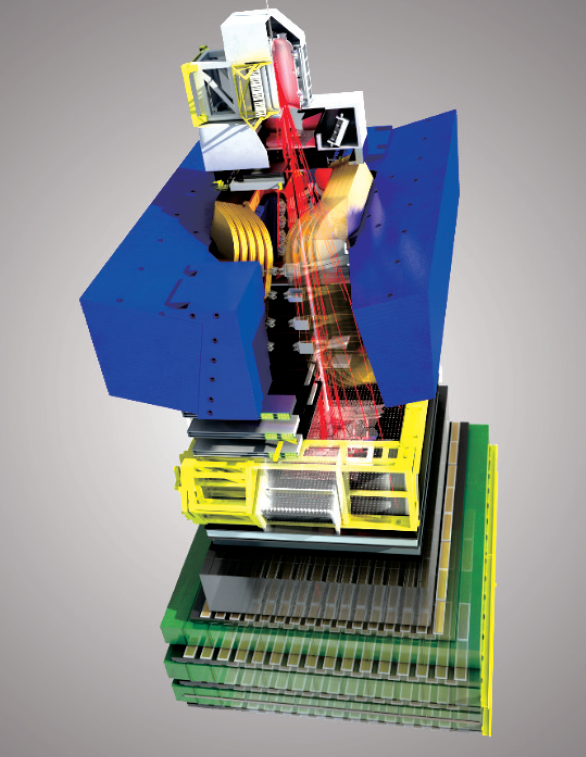LHCb, which is designed for Heavy Flavor physics, is one of the major high-energy physics experiments running on the Large Hadron Collider (LHC) at the European Organization for Nuclear Research (CERN). The LHCb collaboration contains 1174 members, from 69 institutes in 16 countries. Tsinghua University became a member of the LHCb collaboration in 2000, supported by the Natural Science Foundation of China and Tsinghua.
The Tsinghua group is an active group with high impact in the LHCb collaboration, focusing on QCD studies via heavy flavor hadrons. In the last several years, the Tsinghua group made significant contributions in the observation of pentaquarks, precise measurements of production cross-sections and polarization of heavy quarkonia and beauty hadrons, precise measurements of the BC mass and cross-section, observation of many new decay channels of BC mesons, the search for doubly heavy flavor baryons, and cold nuclear matter effects in proton-lead collisions. These studies can test QCD models and help to improve our understanding of strong interactions.
The observation of pentaquark states was selected as Breakthrough of the Year by Physics World (Institute of Physics, UK), and Highlights of the Year by Physics (American Physics Society).
 The LHCb collaboration has 9 Physics Working Groups (PWGs) to organize various physics analyses. The LHCb Collaboration Board nominated two young faculty members of the LHCb Tsinghua group, Zhenwei Yang and Liming Zhang, as conveners of the two different PWGs, B Hadrons and Quarkonia and B Decays to Charmonia at the end of 2014 and 2015 respectively.
The LHCb collaboration has 9 Physics Working Groups (PWGs) to organize various physics analyses. The LHCb Collaboration Board nominated two young faculty members of the LHCb Tsinghua group, Zhenwei Yang and Liming Zhang, as conveners of the two different PWGs, B Hadrons and Quarkonia and B Decays to Charmonia at the end of 2014 and 2015 respectively.

The LHCb Detector
